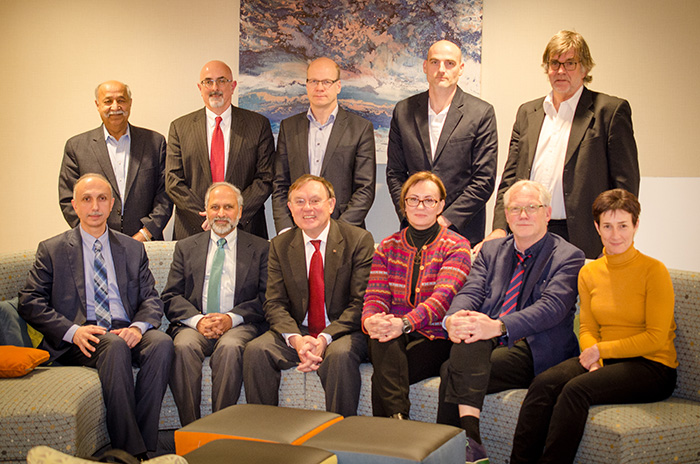DOD Blast Injury Program Hosts NATO Meeting

The Department of Defense Blast Injury Research Program Coordinating Office hosted the NATO Human Factors and Medicine - 270 Research Task Group meeting in Frederick, Maryland, Jan. 10-12.
Explosive weapons are a continuing source of casualties in NATO operations. The spectrum of operational scenarios involving these blast threats is broad, and includes both mounted and dismounted operations. A novel approach is required to rapidly design and test protection systems that can mitigate or prevent blast injuries.
The goal of the task group is to develop a framework for translating scientific information into the capability to model the mechanisms of human lethality, injury and impairment across the spectrum of blast-related threats. This multiscale, multiresolution framework can be used for developing and evaluating effective systems that protect against these blast-related threats.
"I'm honored to chair this very important meeting on behalf of the DOD Executive Agent for Blast Injury Research," said Michael Leggieri, director of the DOD Blast Injury Research Program Coordinating Office and meeting chair.
The task group will leverage previous, ongoing and planned blast injury biomedical research and computational modeling efforts among the participating nations to populate the framework and identify the gaps in understanding injury mechanisms from both mounted and dismounted blasts. Based on these gaps, the task group will develop recommendations for investing in developing additional models or further development of existing models to fill the gaps, thus building a road map for future research.
"Our charge is to develop the framework for a new capability to model and simulate the human effects of blast. This capability will make it possible to protect Service Members from ever-changing blast threats by rapidly developing new blast protection concepts in a virtual environment. By leading this multinational, multidisciplinary effort, we are directly supporting the executive agent's congressional mandate to leverage the expertise of our international partners to address and solve blast injury problems of importance to the DOD and the participating nations," said Leggieri.
The meeting was the second of nine planned gatherings over the three-year lifespan of the task group. The task group developed a program of work at the kick-off meeting in October 2016 that will guide the activities of the following meetings. The purpose of the recent meeting was to identify elements of this framework. Different participating nations will host the three-day meetings.
The panel is made up of 17 technical team members from eight participating nations formally appointed by the Collaboration Support Office, NATO Science and Technology Organization. The participating nations include Canada, France, Germany, Netherlands, Sweden, Turkey, the United Kingdom and the United States.
The Blast Injury Research Program Coordinating Office was established to assist the DOD executive agent by coordinating DOD blast injury research to ensure that critical knowledge gaps are filled to avoid costly and unnecessary duplication of effort, and to accelerate the fielding of prevention and treatment strategies through collaboration and information sharing. Since being established in 2007, the PCO supported the multidisciplinary research efforts that are saving lives, reducing injury and speeding the recovery and reintegration of injured Service Members, veterans and civilian victims of conflict and terrorism.
The PCO plays a critical role in advancing blast injury prevention, treatment and rehabilitation strategies by promoting collaboration between medical and nonmedical research communities within and outside the DOD, both nationally and internationally. The PCO was established as a permanent office at the U.S. Army Medical Research and Materiel Command in 2007 to support executive agent responsibilities as outlined in DOD Directive 6025.21E.
Visit the DOD Blast Injury Research Program website at:
https://blastinjuryresearch.amedd.army.mil/














